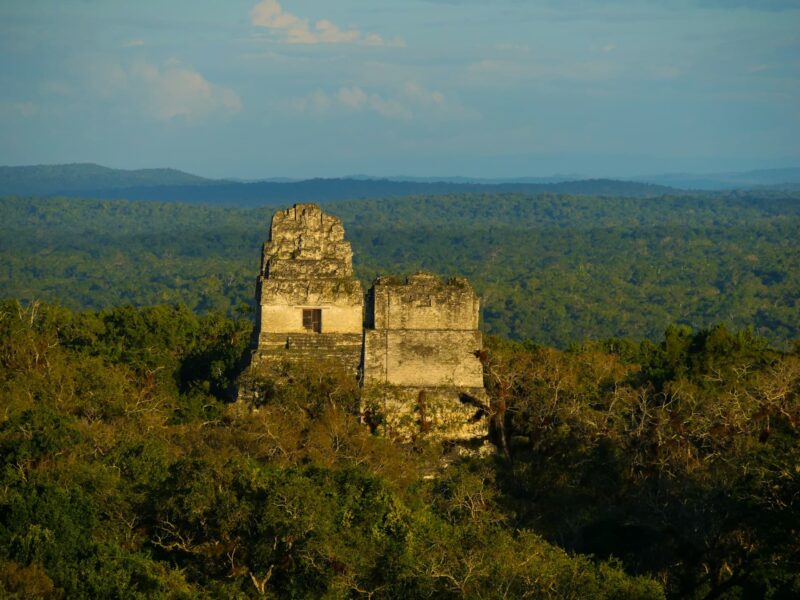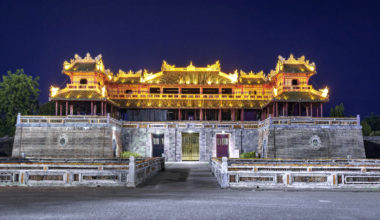The ancient Mayan civilization left behind a legacy of incredible architectural achievements. Among the most awe-inspiring are the Mayan temples, which continue to captivate visitors with their grandeur and historical significance. If you’re eager to explore these remnants of a once-thriving culture, here are 10 famous Mayan temples you can still visit today.
1. Chichen Itza – Yucatán, Mexico
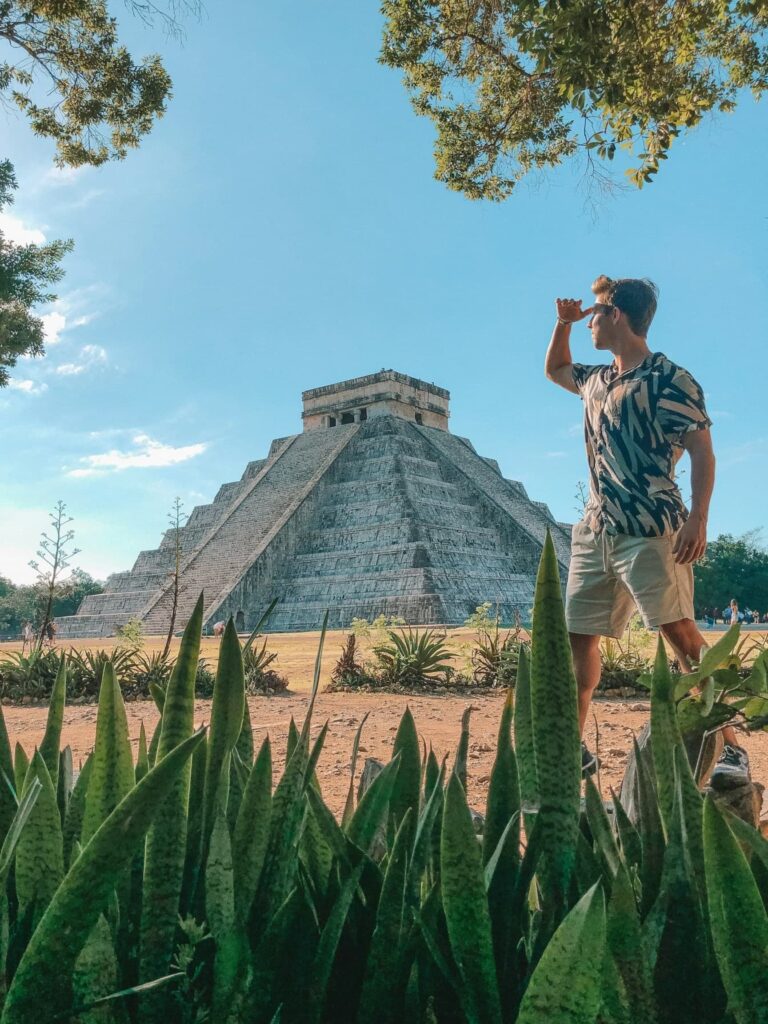
Chichen Itza, designated a UNESCO World Heritage Site in 1988, is renowned for its stunning example of Mayan architecture, particularly the Temple of Kukulkan. This pyramid, also known as El Castillo, showcases the Mayans’ advanced understanding of astronomy and engineering. Like many Mayan temples, the astronomical significance of this pyramid cannot be ignored. During the equinoxes, the play of sunlight creates the illusion of a serpent slithering down the pyramid’s steps, a spectacle that draws thousands of visitors each year. Chichen Itza also boasts other significant structures like the Great Ball Court, which is the largest in Mesoamerica, and the Temple of the Warriors.
Interesting facts about Chichen Itza
- Age: Dates back to the 5th century.
- Size: Covers over 5 square kilometers.
- El Castillo: Stands 30 meters (98 feet) tall with a base of 55.3 meters (181 feet) on each side.
- Astronomical significance: The pyramid’s 365 steps represent the days of the solar year.
- Historical significance: A major regional capital and cultural melting pot during its peak.
When is the best time to visit Chichen Itza?
The best time to visit Chichen Itza is during the early morning hours, ideally as soon as the site opens at 8:00 am. This allows you to explore the site before the crowds arrive and the midday heat sets in. Visiting during the shoulder seasons — April to June and September to November — can also help you avoid the peak tourist season, providing a more tranquil experience.
Where is Chichen Itza located?
Chichen Itza is located in the northern center of the Yucatán Peninsula, about 120 kilometers from Mérida and 200 kilometers from Cancun. The site is easily accessible by car, bus, or guided tour from these major cities. Its location makes it one of the most visited Mayan ruins near Cancun.
How can you visit Chichen Itza?
To visit Chichen Itza, you can either drive, take a bus, or join a guided tour from nearby cities. The site is well-signposted and offers ample parking. Once at the site, you can explore on your own or hire a local guide for a deeper understanding of the Mayan ruins. Entrance fees vary, with an additional charge if you want to bring in a video camera.
✈️ Thinking of planning a group trip to the Yucatán? Reach out to TourHero and craft an itinerary that works for you!
What are the top tips for visiting Chichen Itza?
- Arrive early to beat the crowds and heat.
- Visit during the equinoxes if you want to witness the serpent shadow on the Temple of Kukulkan.
- Bring water, sunscreen, and a hat, as there is little shade on site.
- Consider a guided tour to fully appreciate the history and significance of the site.
2. Tikal – Petén, Guatemala
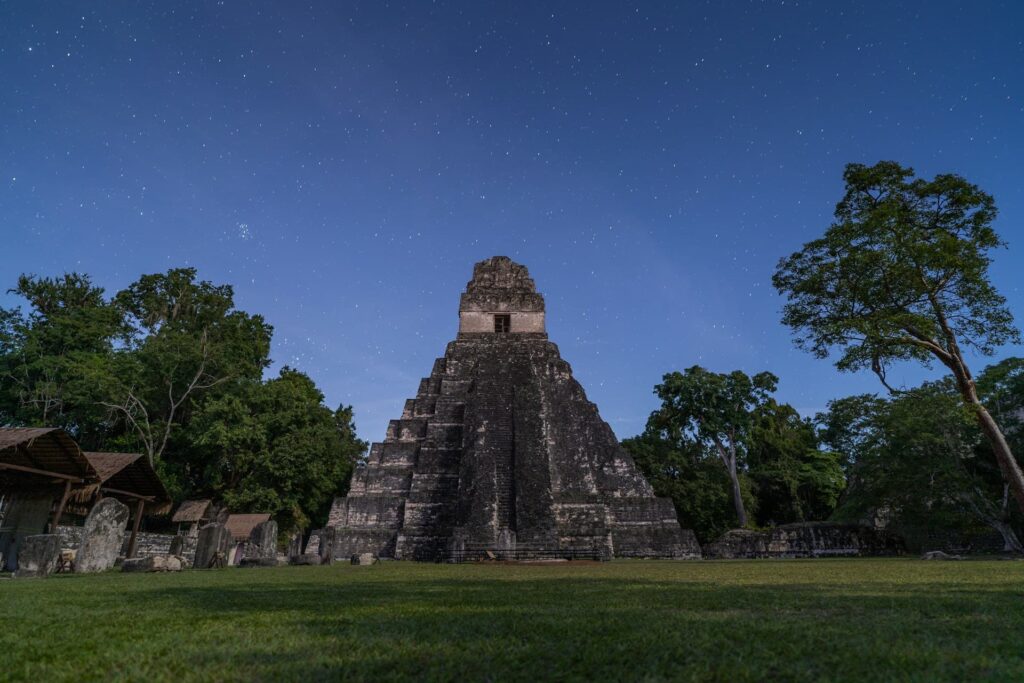
Tikal is one of the largest and most significant Mayan ruins, offering an expansive glimpse into ancient Mayan civilization. The site is home to several towering Mayan temples, including Temple IV, which stands at 230 feet. Tikal’s temples are particularly known for their verticality and are surrounded by lush jungle, giving visitors a sense of discovery as they explore. The acoustics of the Great Plaza and the presence of wildlife, such as howler monkeys, add to the unique experience. Tikal National Park was declared a UNESCO World Heritage Site in 1979.
Interesting facts about Tikal
- Age: Inhabited as early as the 4th century BC, peaked during the Classic Period (200 – 900 AD).
- Size: Covers approximately 16 square kilometers with over 3,000 structures.
- Temple IV: Completed in 741 AD, stands 230 feet tall — the tallest pre-Columbian structure in the Americas.
- Population: Estimated to have reached 100,000 people at its height.
- Political influence: Played a crucial role in the Mayan civilization’s political and economic landscape.
When is the best time to visit tikal?
The ideal time to visit Tikal is during the dry season, from December to April, when the weather is more predictable and comfortable. Early morning visits are highly recommended, as the sunrise over the Mayan temples, particularly from Temple IV, is a breathtaking sight. The early hours also allow you to enjoy the jungle sounds and see wildlife before the heat of the day.
Where is Tikal located?
Tikal is located in the Petén region of northern Guatemala, within the Tikal National Park. The nearest town is Flores, about 65 kilometers away, where most travelers base themselves. The site is reachable by bus, car, or organized tour from Flores. For international travelers, the closest airport is Mundo Maya International Airport in Flores.
How can you visit tikal?
You can visit Tikal by taking a bus or car from Flores, with many guided tours available that include transportation. The park has well-marked trails that lead to the various temples and plazas, but it’s easy to spend an entire day exploring, so plan accordingly. Entry fees are required, with additional fees for sunrise or sunset tours.
✈️ Ready to jet off to Guatemala? Let TourHero plan an unforgettable trip for you.
What are the top tips for visiting Tikal?
- Wear sturdy walking shoes, as the site covers a large area with uneven terrain.
- Bring insect repellent to protect against mosquitoes in the jungle.
- Consider a guided tour to learn about the rich history and significance of the ruins.
- Don’t miss climbing Temple IV for a panoramic view of the jungle canopy.
3. Palenque – Chiapas, Mexico
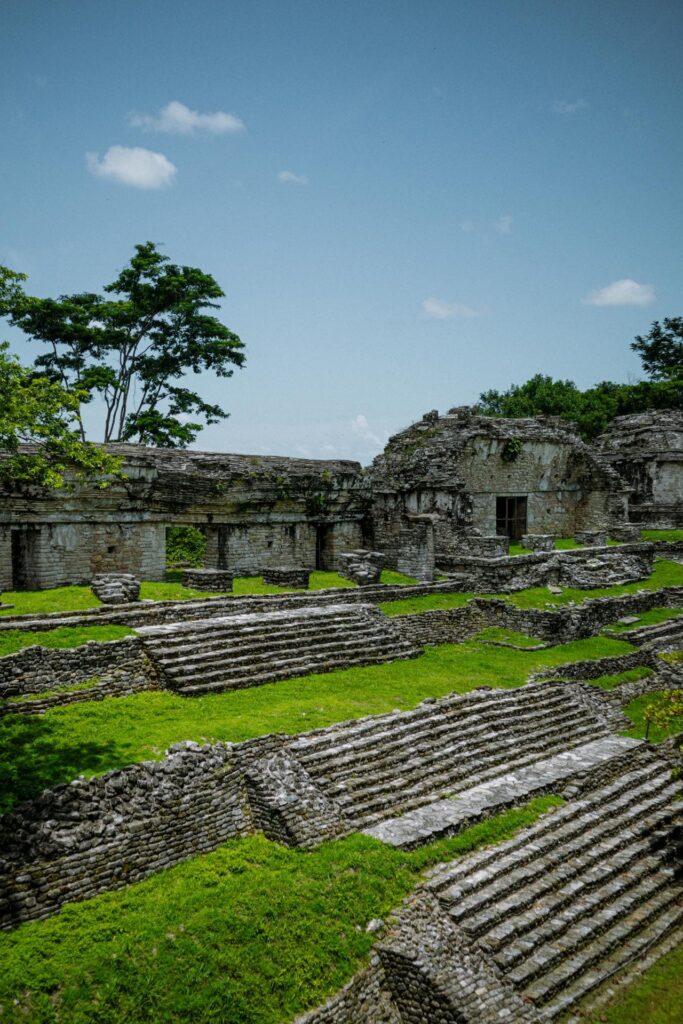
Palenque is celebrated for its exquisite stone carvings and the intricate details of its Mayan architecture. The Temple of the Inscriptions, which houses the tomb of the ruler Pakal the Great, is one of the most important discoveries in Mesoamerican archaeology. The site’s smaller size compared to others, like Chichen Itza, allows for a more intimate exploration of the Mayan temples and the surrounding jungle. The Pre-Hispanic City and National Park of Palenque were designated a UNESCO World Heritage Site in 1987.
Interesting facts about Palenque
- Age: Founded around 100 BC, flourished between 600 and 750 AD.
- Temple of the Inscriptions: Stands 22 meters (72 feet) tall; contains a significant hieroglyphic text.
- Size: Originally covered around 2.5 square kilometers.
- Engineering: Known for its unique water management system, including aqueducts and underground channels.
- Preservation: Only a small portion of the site has been excavated today.
When is the best time to visit Palenque?
The best time to visit Palenque is during the dry season, from November to April. This period offers cooler temperatures and less humidity, making it more comfortable to explore the site. Early morning or late afternoon visits are ideal to avoid the midday heat and enjoy the site with fewer tourists.
Where is Palenque located?
Palenque is situated in the state of Chiapas, Mexico, approximately 130 kilometers south of the Gulf Coast. The nearest town is also called Palenque, which is about 8 kilometers from the ruins. The site is accessible by car, bus, or guided tour from nearby cities such as Villahermosa or San Cristóbal de las Casas.
How can you visit Palenque?
To visit Palenque, you can drive, take a bus, or join a guided tour from nearby cities. The site has a visitor center with exhibits on the Mayan ruins and the local culture. Guided tours are recommended to fully appreciate the significance of the Temple of the Inscriptions and other structures. Entrance fees apply.
What are the top tips for visiting Palenque?
- Visit early in the morning to enjoy the site with fewer crowds.
- Wear comfortable shoes and light clothing, as the climate can be hot and humid.
- Explore the surrounding jungle trails to discover hidden temples and waterfalls.
- Bring a camera to capture the intricate carvings and lush scenery.
4. Uxmal – Yucatán, Mexico
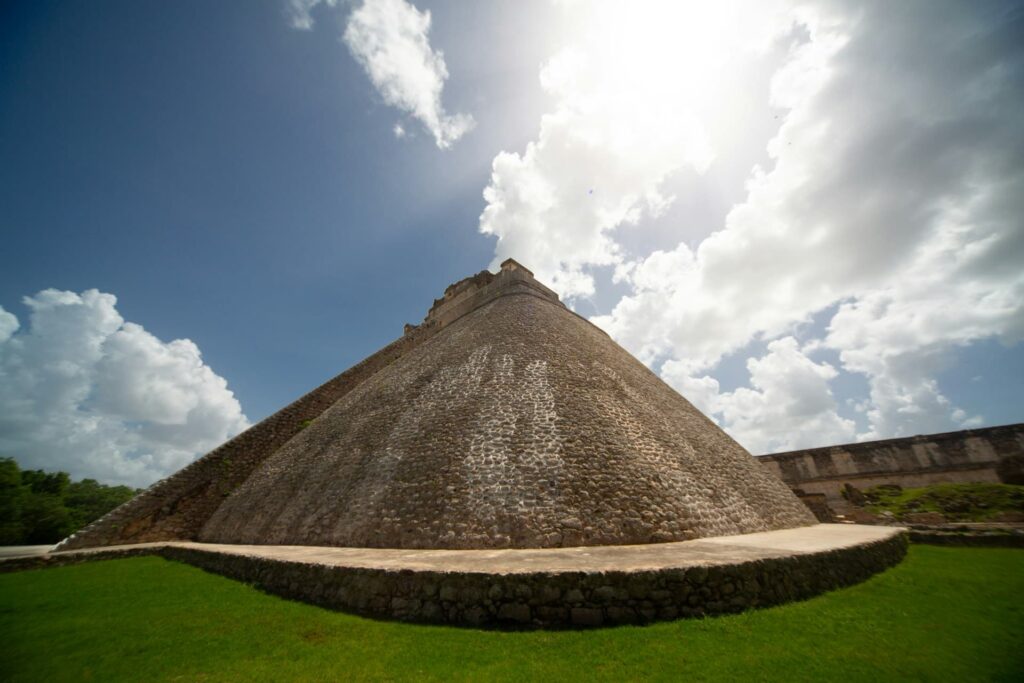
Uxmal is unique for its architectural elegance, particularly the Pyramid of the Magician, which features rounded sides and steep slopes — a rare design among Mayan temples. The Nunnery Quadrangle showcases intricate geometric patterns and stone mosaics that exemplify the Puuc style of Mayan architecture. Uxmal’s well-preserved structures and the mystical legends surrounding the site add to its allure.
Interesting facts about Uxmal
- Age: Built around 500 AD, peaked between 850 and 925 AD.
- Pyramid of the Magician: Stands 35 meters (115 feet) tall; base measures 69 meters (226 feet) by 49 meters (161 feet).
- Nunnery Quadrangle: Features detailed carvings of serpents, masks, and latticework.
- Architectural style: Reflects the Puuc style, characterized by smooth walls and intricate stone mosaics.
- Cosmic alignment: Buildings are aligned with astronomical events, reflecting the Mayan belief in cosmic order.
When is the best time to Visit Uxmal?
The best time to visit Uxmal is during the cooler months of November to March. These months offer comfortable temperatures for exploring the site. Evening visits can be particularly enchanting, as Uxmal offers a light and sound show that illuminates the Mayan temples, adding a magical atmosphere to the experience.
Where is Uxmal located?
Uxmal is located in the Puuc region of the Yucatán Peninsula, approximately 80 kilometers south of Mérida. The site is easily accessible by car or bus from Mérida. Its proximity to other Mayan ruins, such as Kabah and Sayil, makes it an ideal destination for those interested in exploring multiple archaeological sites.
How can you visit Uxmal?
You can visit Uxmal by car or bus from Mérida, with guided tours available for a more in-depth exploration. The site is well-marked and easy to navigate, with interpretive signs providing information on the various structures. Entrance fees are required, with additional fees for attending the evening light and sound show.
✈️ Want to plan your next history lesson and see the impressive site of Uxmal? Get started with TourHero!
What are the top tips for visiting Uxmal?
- Attend the evening light and sound show for a unique experience.
- Bring a hat and sunscreen, as there is limited shade on the site.
- Explore the nearby ruins of Kabah, Sayil, and Labná to see more of the Puuc architectural style.
- Consider hiring a guide to learn about the legends and history of Uxmal.
5. Coba – Quintana Roo, Mexico
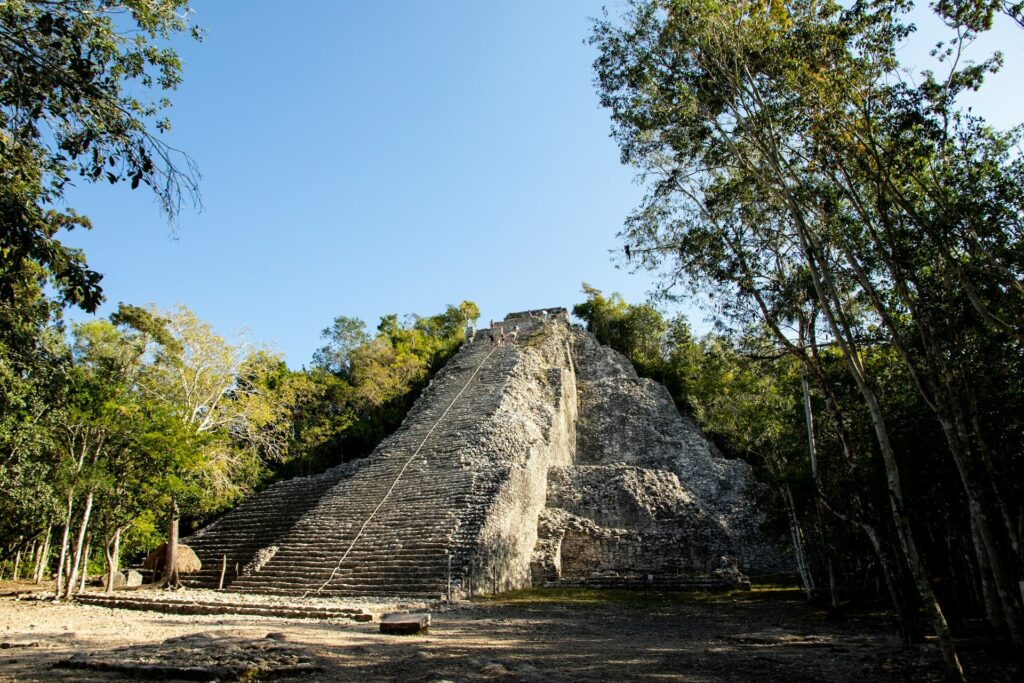
The Coba Archaeological Zone is distinguished by its expansive network of sacbeob (white roads) that connect the various temple complexes. The Nohoch Mul pyramid, the tallest Mayan temple on the Yucatán Peninsula, offers visitors the rare opportunity to climb to the top and enjoy a panoramic view of the jungle. Coba’s less-excavated state compared to other sites gives it a mysterious and adventurous feel.
Interesting facts about the Coba ruins
- Age: Important from 200 AD to 600 AD, with continuous occupation until the 15th century.
- Size: Covers approximately 80 square kilometers, one of the largest Mayan cities of its time.
- Nohoch Mul Pyramid: Stands 42 meters (138 feet) tall with 120 steps to the summit.
- Sacbeob network: Includes over 50 white roads, the longest of which is 100 kilometers (62 miles).
- Cultural hub: A major center of trade and culture in the Mayan world.
When is the best time to visit the Coba ruins?
The best time to visit the Coba ruins is during the early morning or late afternoon, especially during the cooler months of November to February. These times offer a more comfortable climate for climbing the pyramids and exploring the extensive site. Avoid visiting during midday when temperatures can be high, and the sun is at its peak.
Where are the Coba ruins located?
Coba is located in the state of Quintana Roo, about 44 kilometers northwest of Tulum and 90 kilometers from Playa del Carmen. The site is easily accessible by car, bus, or guided tour from these popular tourist destinations. Its location near Tulum makes it one of the most intriguing Mayan ruins near Cancun.
How can you visit the Coba ruins?
You can visit the Coba Archaeological Zone by driving, taking a bus, or joining a guided tour from nearby cities. Bicycles are available for rent at the site, allowing you to explore the vast network of sacbeob with ease. Alternatively, you can hire a tricycle taxi, known as a “Mayan limousine,” for a unique way to see the ruins. Entrance fees are required, with additional fees for bicycle rentals.
✈️ Want to host a trip to Quintana Roo and visit the Coba ruins with your group? Let TourHero create an itinerary that works for you!
What are the top tips for visiting the Coba ruins?
- Rent a bicycle to explore the site quickly and comfortably.
- Climb Nohoch Mul for a rewarding view of the surrounding jungle.
- Visit early in the day to avoid the heat and crowds.
- Wear insect repellent to protect against mosquitoes.
6. Calakmul – Campeche, Mexico
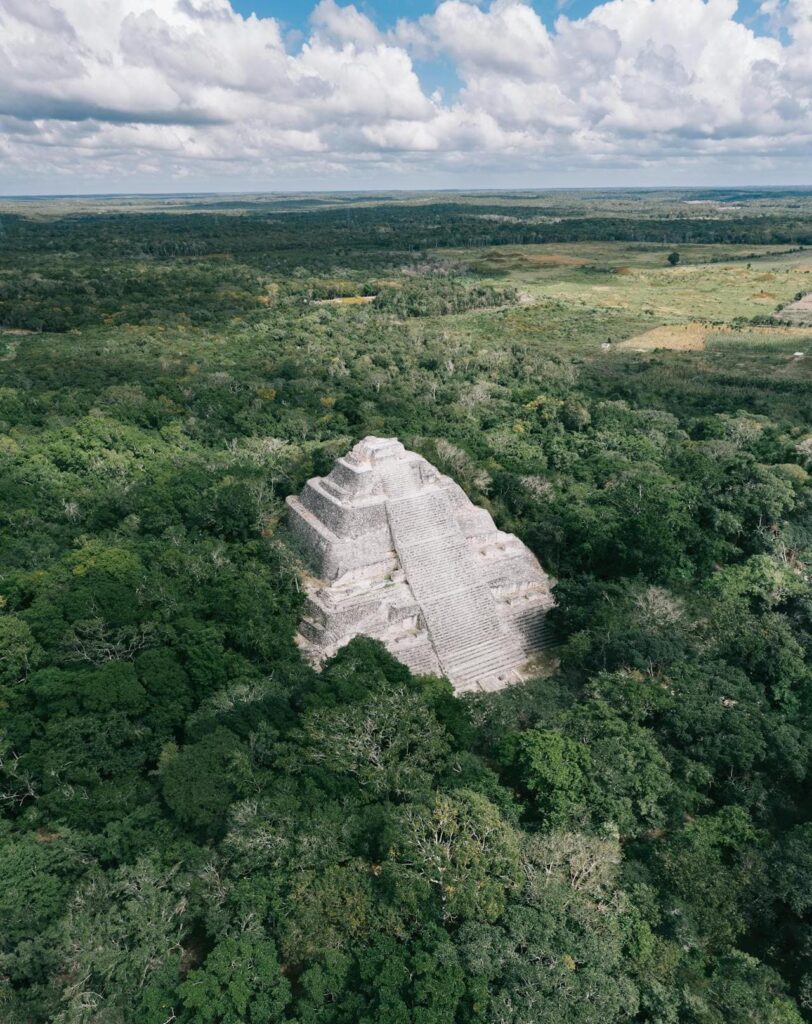
Designated a UNESCO World Heritage Site in 2002, Calakmul was one of the most powerful Mayan cities, rivaling Tikal in size and influence. The site is home to two massive pyramids, Structures I and II, which offer stunning views of the surrounding rainforest. Calakmul’s remote location within the Calakmul Biosphere Reserve means it sees fewer tourists, allowing for a serene exploration of its ancient temples.
Interesting facts about Calakmul
- Age: Dates back to around 500 AD; peaked during the Classic period.
- Size: Covers about 70 square kilometers with over 6,500 structures.
- Structure II: One of the largest Mayan pyramids, standing over 50 meters tall.
- Kingdom of the Snake: Capital of one of the most powerful dynasties in Mayan history.
- A thriving city: In its prime, Calakmul was home to about 65,000 people.
When is the best time to visit Calakmul?
The best time to visit Calakmul is during the dry season, from November to April. During these months, the weather is more predictable, and the jungle trails are easier to navigate. Early morning visits to the Mayan temples are recommended to enjoy the cool temperatures and the sounds of the awakening jungle.
Where is Calakmul located?
Calakmul is located in the southern part of the Yucatán Peninsula, within the Calakmul Biosphere Reserve in Campeche, Mexico. The nearest town is Xpujil, about 60 kilometers away, making it a remote yet rewarding destination. The site is accessible by car, but the journey through the jungle to get to the Mayan temples adds to the adventure.
How can you visit Calakmul?
To visit the archaeological site of Calakmul, you can drive from Xpujil or join an organized tour. The journey through the biosphere reserve takes you deep into the jungle, offering the opportunity to see wildlife along the way. The site itself is expansive, so plan to spend the whole day exploring. Entrance fees apply, and it’s advisable to bring your own water and snacks, as there are limited facilities on site.
What are the top tips for visiting Calakmul?
- Bring plenty of water and snacks, as there are no vendors on site.
- Wear sturdy shoes for walking on uneven terrain.
- Arrive early to maximize your time exploring this remote site.
- Keep an eye out for wildlife, including howler monkeys and tropical birds.
7. Ek Balam – Yucatán, Mexico
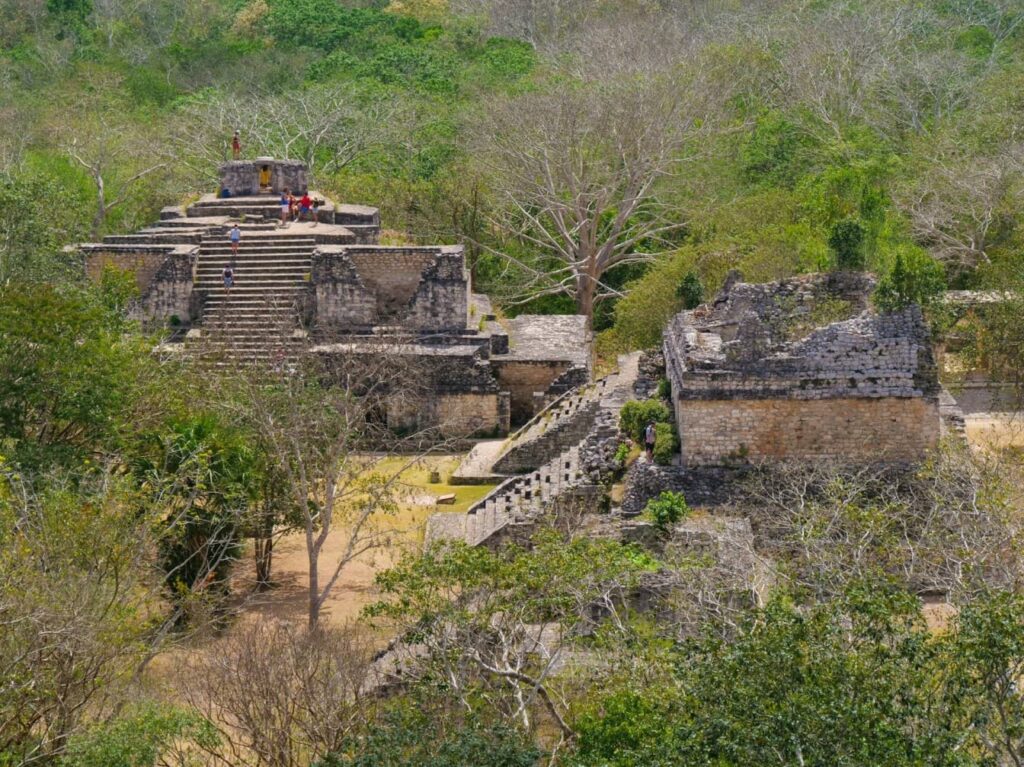
Ek Balam, meaning “black jaguar” or “bright star jaguar” in Yucatec Maya, is famous for its well-preserved stucco sculptures and elaborate tombs. The Acropolis, the main structure, stands out for its detailed carvings, which depict rulers and religious scenes. Unlike many other Mayan temples, Ek Balam’s ruins are in excellent condition, offering a vivid glimpse into Mayan artistry and architecture.
Interesting facts about Ek Balam
- Age: Flourished between 700 and 1000 AD.
- Size: Covers 12 square kilometers with more than 45 structures.
- The Acropolis: Measures 160 meters (525 feet) long, 70 meters (230 feet) wide, and 31 meters (102 feet) high.
- Tomb of Ukit Kan Lek Tok’: Contains intricate friezes depicting winged warriors and rulers.
- Preservation: One of the best-preserved Mayan sites, offering detailed insights into Mayan art and culture.
When is the best time to visit Ek Balam?
The best time to visit Ek Balam is during the cooler months, from November to February. Visiting in the early morning or late afternoon will help you avoid the heat and enjoy the site with fewer tourists. These times also offer the best lighting for photography, particularly of the Acropolis.
Where is Ek Balam located?
Ek Balam is located in the northern part of the Yucatán Peninsula, about 25 kilometers north of Valladolid and 170 kilometers from Cancun. The site is easily accessible by car or guided tour from these cities. Its proximity to other major Mayan ruins makes it an excellent addition to a Yucatán itinerary.
How can you visit Ek Balam?
You can visit Ek Balam by driving or joining a guided tour from Valladolid or Cancun. The site is compact but rich in history, making it easy to explore in a few hours. The entrance fee includes access to the entire site, and you’re free to climb the Acropolis for a panoramic view of the surrounding jungle.
What are the top tips for visiting Ek Balam?
- Climb the Acropolis for a stunning view of the Yucatán Peninsula.
- Visit early in the day to avoid the heat and crowds.
- Wear comfortable shoes, as some climbing is required to fully explore the site.
- Combine your visit with a trip to the nearby cenotes for a refreshing swim.
8. Tulum – Quintana Roo, Mexico
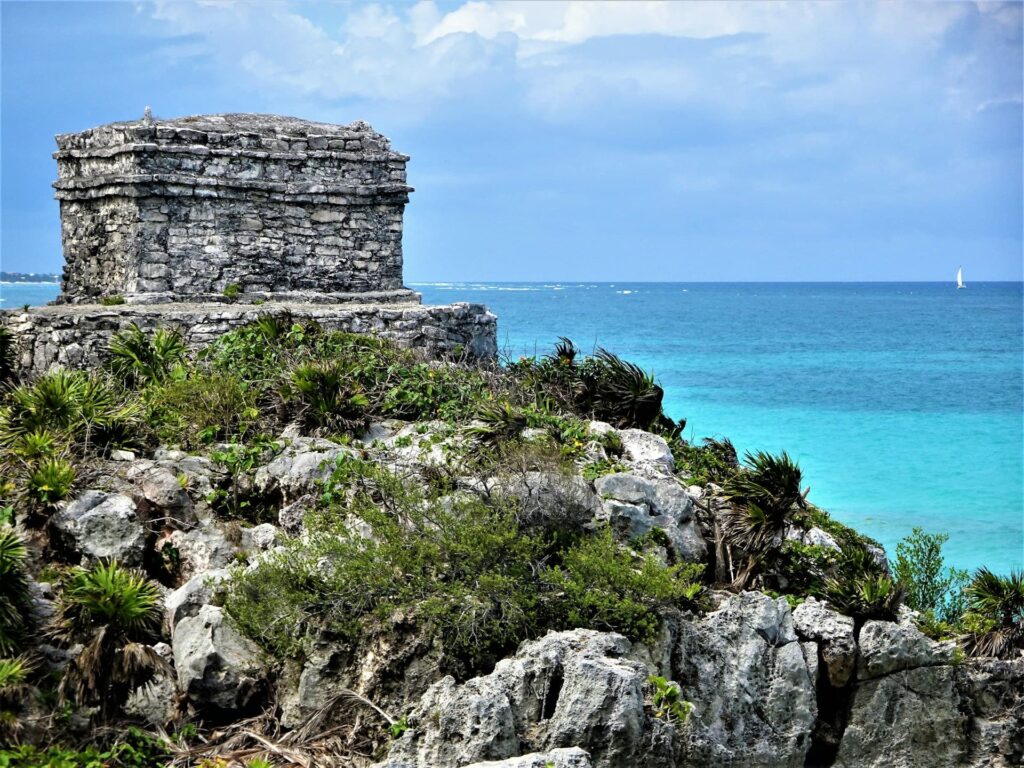
The ruins of Tulum was an important Mesoamerican site that features both Mayan and Toltec history. The ancient fortress houses the only Mayan ruins in Mexico that sit on a shoreline atop a cliff overlooking the Caribbean Sea, making it truly unique for its dramatic location. The Temple of the Frescoes, known for its preserved murals, and El Castillo, perched on the cliff edge, are the highlights of the site. Tulum’s proximity to the beach and the town of Tulum makes it an ideal destination for those looking to combine cultural exploration with relaxation.
Interesting facts about the Tulum ruins
- Age: Dates back to 564 AD; thrived between the 13th and 15th centuries.
- Size: Enclosed by a massive limestone wall, covering about 8 hectares.
- El Castillo: Stands 12 meters (39 feet) tall, positioned on a cliff edge.
- Trade hub: Key port city for trading jade, obsidian, and turquoise.
- Strategic location: Linked the Yucatán Peninsula with the Gulf of Mexico and other trade routes.
When is the best time to visit the Tulum ruins?
The best time to visit the Tulum ruins is during the cooler months from November to February. Early morning visits are ideal for avoiding the crowds and enjoying the site before the heat sets in. If possible, visit during the week rather than the weekend, as Tulum is a popular destination for both tourists and locals.
Where are the Tulum ruins located?
Tulum is located in the state of Quintana Roo, on the eastern coast of the Yucatán Peninsula, approximately 130 kilometers south of Cancun. The archaeological zone is easily accessible by car, bus, or guided tour from Cancun, Playa del Carmen, or the town of Tulum itself. Its location near the coast makes it one of the most picturesque Mayan ruins near Cancun.
How can you visit the Tulum ruins?
You can visit Tulum by car, bus, or guided tour from nearby cities. The site is well-marked and easy to navigate, with interpretive signs providing information about the various structures. Entrance fees apply. Consider combining your visit with a trip to the nearby cenotes for a refreshing swim.
✈️ Thinking of a journey to Tulum to uncover the secrets of this seaside fortress? Plan your adventure with TourHero!
What are the top tips for visiting the Tulum ruins?
- Visit early in the morning to beat the crowds and enjoy the cooler temperatures.
- Bring a swimsuit, as the beach below the ruins is perfect for a refreshing dip.
- Wear sunscreen and a hat, as there is little shade on the site.
- Consider hiring a guide to learn about the history and significance of the ruins.
9. Copan – Copan, Honduras
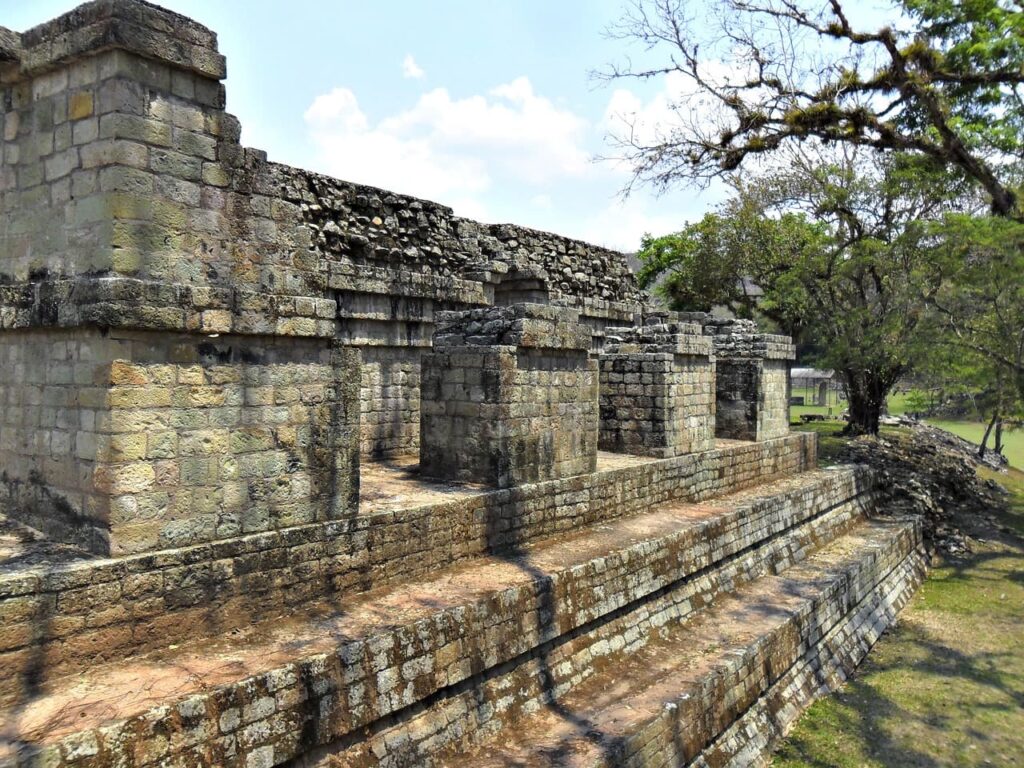
Copan is renowned for its intricate stone carvings and stelae that depict ancient Mayan rulers and gods. The Temple of the Hieroglyphic Stairway, which contains the longest known Mayan text, is a highlight of the site. Copan’s detailed artwork and well-preserved structures make it a crucial destination for those interested in Mayan history and culture. The Maya Site of Copan was designated a UNESCO World Heritage Site in 1980.
Interesting facts about the Copan ruins
- Age: Founded around 100 AD; peaked during the 7th century.
- Size: Covers approximately 24 square kilometers.
- Temple of the Hieroglyphic Stairway: Features 63 steps and over 1,800 glyphs, the longest known Mayan inscription.
- Cultural significance: A major center of astronomy, art, and hieroglyphic writing.
- Population: Once supported a population of up to 20,000 people.
When is the best time to visit the Copan ruins?
The best time to visit the Copan ruins is during the dry season, from November to April. The weather is more comfortable during these months, allowing for easier exploration of the site. Early morning visits are recommended to avoid the midday heat and enjoy the site before it gets busy.
Where are the Copan ruins located?
Copan is located in the Copan Department of western Honduras, near the Guatemalan border. The nearest town is Copan Ruinas, which is about 1 kilometer from the archaeological site. The site is accessible by car, bus, or guided tour from nearby cities, with most visitors coming from San Pedro Sula or Guatemala City.
How can you visit the Copan ruins?
To visit the Copan ruins, you can drive, take a bus, or join a guided tour from Copan Ruinas or other nearby cities. The site is compact but rich in history, making it easy to explore in a few hours. Guided tours are highly recommended to fully appreciate the significance of the carvings and the hieroglyphic stairway. Entrance fees apply, with additional fees for photography.
What are the top tips for visiting the Copan ruins?
- Hire a guide to learn about the history and significance of the site’s carvings.
- Visit early in the day to avoid the heat and crowds.
- Wear comfortable shoes, as the site includes uneven terrain and stairs.
- Bring water and snacks, as there are limited facilities on site.
10. El Mirador – Petén, Guatemala
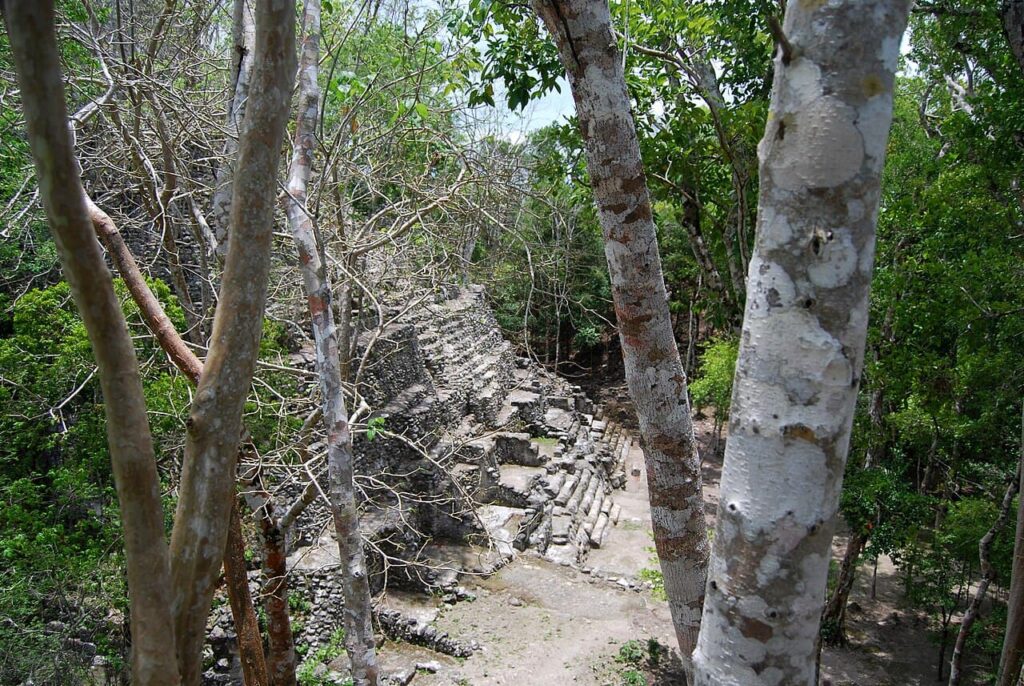
El Mirador is one of the oldest and largest Mayan cities, known for its massive Danta Pyramid, which is one of the largest Mayan temples in the world by volume. The site remains less excavated than others, giving it an air of mystery and adventure. Exploring El Mirador offers a rare glimpse into the early development of Mayan architecture and urban planning.
Interesting facts about El Mirador
- Age: Dates back to around 600 BC; peaked between 300 BC and 150 AD.
- Size: One of the largest Mayan cities, covering a vast area with numerous unexcavated structures.
- Danta Pyramid: Measures about 72 meters (236 feet) in height and covers 2,800 square meters in base area.
- Population: Estimated to have supported over 100,000 people at its peak.
- Urban planning: Showcases one of the earliest and most complex examples of Mayan city layout.
When is the best time to visit El Mirador?
The best time to visit El Mirador is during the dry season, from December to April. This period offers more predictable weather, making the trek through the jungle more manageable. Due to its remote location, it’s best to plan a multi-day trek with a guided tour, which typically includes camping in the jungle.
Where is El Mirador located?
El Mirador is located in the remote northern part of the Petén region in Guatemala, near the border with Mexico. The site is deep within the dense jungle, about 60 kilometers from the nearest road. Access to El Mirador requires a multi-day trek from the town of Carmelita, or you can arrange for a helicopter tour if you’re short on time.
How can you visit El Mirador?
Visiting El Mirador involves a challenging trek through the jungle, typically starting from the town of Carmelita. The trek takes about 2 – 3 days each way, with guided tours providing all necessary equipment and support. For those seeking a faster option, helicopter tours are available, offering stunning aerial views of the ruins and the surrounding jungle.
What are the top tips for visiting El Mirador?
- Be prepared for a multi-day trek through dense jungle terrain.
- Bring sufficient water, snacks, and camping gear if trekking.
- Consider a helicopter tour for a quicker and more comfortable visit.
- Travel with a guide to ensure your safety and enhance your understanding of the site.
Conclusion
These incredible Mayan temples represent just a fraction of the architectural wonders left behind by the ancient civilization. Each site offers a unique window into the past, allowing modern visitors to connect with the grandeur and mystery of Mayan culture. Whether you’re exploring the well-preserved ruins of Tikal or the remote pyramids of El Mirador, the experience of standing before these Mayan temples is truly unforgettable.
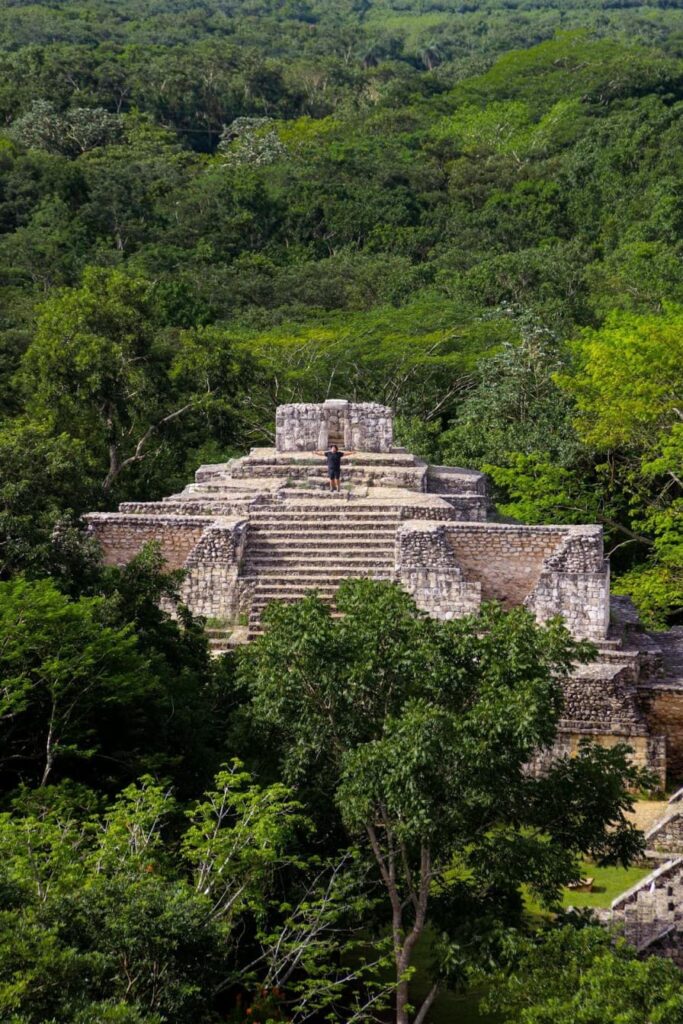
Start your journey to discover the secrets of an ancient civilization today with TourHero — we’ll help you and your group plan a truly special adventure to see these Mayan temples!
About TourHero
TourHero is a social travel platform that enables you to travel with like-minded people and fall in love with the journey. We work closely with handpicked local operators to ensure every experience curated is unique and exclusive to your travel group. Come with us on epic adventures and create memories that last a lifetime. Get started here!
